388 Mendelling in others Business
MENDELING IN OTHER PEOPLES' BUSINESS
by David Hancock
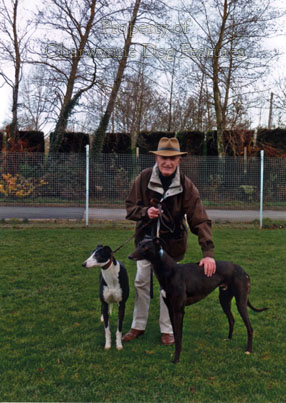 Breeding dogs in the coming century is, I believe, going to be even harder than in the past. I suspect that, in future decades, breeders will become saturated with information, overloaded with advice and deluged with legislation. What's new, some will shout. Well, dog breeders have, compared to some livestock breeders, long been spared excessive legislation, if never short of well-intended advice. A great deal of advice has come from experts called geneticists, despite surprisingly little valuable research when you consider dog's prominence in society. Much of this advice has been undermined by two facts: firstly no professional geneticist has ever, to my knowledge, become a top breeder of dogs. And, secondly, the science of genetics has long been hidden behind impalpable jargon.
Breeding dogs in the coming century is, I believe, going to be even harder than in the past. I suspect that, in future decades, breeders will become saturated with information, overloaded with advice and deluged with legislation. What's new, some will shout. Well, dog breeders have, compared to some livestock breeders, long been spared excessive legislation, if never short of well-intended advice. A great deal of advice has come from experts called geneticists, despite surprisingly little valuable research when you consider dog's prominence in society. Much of this advice has been undermined by two facts: firstly no professional geneticist has ever, to my knowledge, become a top breeder of dogs. And, secondly, the science of genetics has long been hidden behind impalpable jargon.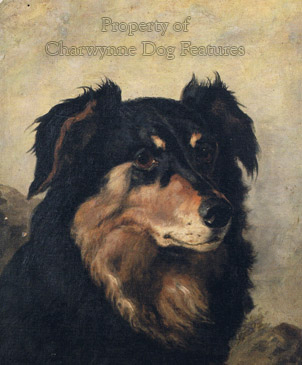
If an expert is someone capable of making something difficult sound simple, then a geneticist is the antithesis: someone capable of making something essentially simple into something apparently arcane. The dictionary tells us that jargon is 'a mode of speech familiar only to a group or profession'. But it also defines the word as meaning 'unintelligible words, gibberish, barbarous or debased language'. I prefer the latter as a definition. It is no accident that the father of genetics was a monk, who by simple experiments told us what no highly-qualified biological mathematician had been able to tell us before. Since Mendel's ground-breaking work however, the subject has fallen into the hands of highly-trained biometricians, who seem to prefer conversing with each other.
I have enormous sympathy for any dog-breeder who, with an admirable desire to learn, tries to study a book on genetics, and there are half a dozen specially for them. Take this extract from one of them: "It is advisable to appreciate that an individual could be heterozygous for an allele lower in series than that appearing among the offspring. No ambiguity will arise, of course, if the heterozygote is mated to an individual homozygous for the lowest allele of the series." And now consider this masterpiece: "In contrast dominant effects involve interactions between alleles at the same locus with ++ and +0 having identical effects. In the case of epistatic effects we are dealing with interactions between alleles at different loci with +0 or ++ at the A locus being ineffective unless there is at least a + at another B or C locus." 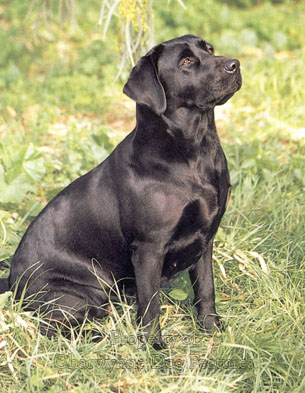
Both these quotes come from books carrying 'Genetics for Dog Breeders' in their title. Dog breeders with a clear understanding of the meaning of these quotes cannot be but rare. The books therefore lose their impact and their value to dog breeding, which is not good for the future of the domestic dog. It would not surprise me at all if geneticists were found 'moonlighting' as writers of instructions for self-assembly furniture! And before the faint-hearted give up and declare that 'it's all Greek to me!' it is worth remembering that it is pseudo-Greek in effect. Zygote comes from the Greek for a yoke; allele and epistatic are also Greek derivatives, with locus coming from a Latin root. Without a medical or classical education dog breeders may well find books on genetics very heavy going. This hardly promotes scientific dog breeding. 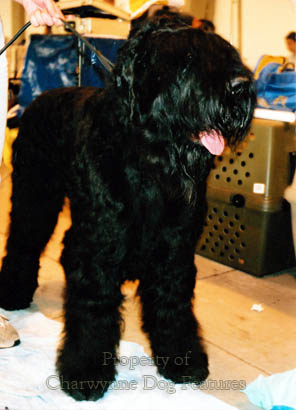
When, as a young teenager, I attempted to develop my own strain of silver mice, my handbook was a two shilling paperback entitled 'In-Breeding, what it is and what it does' by CA House, published by the Fur and Feather magazine. It was subtitled 'The secret of success in livestock culture fully described'; many years later, when responsible for a rare breeds farm, I found that sub-title to be a fair one. CA House was a highly experienced (and successful) breeder of poultry and fancy birds but he was thankfully a master of the English language and didn't try to inflate his ego or standing by hiding behind the misuse of hybrid jargon. Dog breeders of today have no jargonless source, in plain English, of professional genetic advice based on experience, sound science and experimentation. They deserve better and so do our dogs.
The lack of impact by geneticists in present-day dog breeding can be seen in any show ring, and that is not a sideswipe at show dogs or their breeders. If geneticists had a decypherable message they would become valued, be consulted regularly by breeders and advise breed clubs. How many dog breeders consult geneticists? How many breed clubs consult them? The failure of geneticists to have any profound influence in dog breeding lies in their hands; they have frightened away so many well-intentioned eager-to-learn breeders. At a time when the canine genome is being unravelled and inheritable diseases have become desperately worrying, we need the help of scientists in producing sound dogs more than ever before.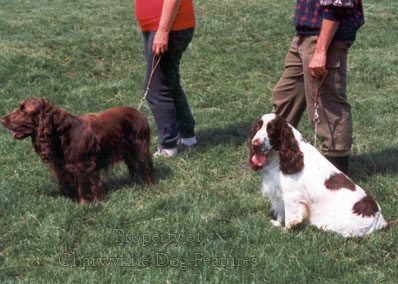
Two of the more readable books on genetics in the dog concern the inheritance of coat colour and far too many chapters in other books on canine genetics are devoted to this interesting but not paramount aspect. Point me to an easily digested book on the inheritance of anatomical features, working skills and mental make-up and I will want to study it diligently. I have to go to books or articles from the packhound fraternity if I wish to research these aspects, but it will be anecdotal rather than scientific in the true sense. But how many scientists tap into such material? These are sources of empirical evidence and could have value outside the hunting field.
The inheritance of genes depends on the reaction between active and passive genes, called dominant and recessive by geneticists, although concessive would surely be more accurate than recessive. Knowing the circumstances in which some active genes assert themselves and some passive ones combine to take effect is valuable information to breeders, whether it concerns defective genes or those with desired value. We are told that 'hunting' instincts are inherited as distinctly as more visible characteristics, i.e. The 'treeing' aptitude, the head held low for ground scent or high for air scent, the tendency to mouth prey rather than kill it quickly or the instinct to 'hold' quarry rather than 'slash' at it with a tearing action.
The American Vet Whitney suggested that short legs are dominant over long, that the presence of hindleg dewclaws was dominant over their absence and that Greyhounds have a larger heart and liver than other breeds, and pass it on. He recorded that the narrow pointed head of the sheepdog was dominant over the broader dished head of the Pointer, that the elongated head of the Greyhound was dominant over the short-faced Bulldog's skull-shape but that the latter was dominant over the Dobermann-type head and usually dominant over the Basset Hound head. He stated that a narrow chest was dominant over a broad chest, that a screw tail was not linked to the Bulldog head, as many believe still, and that the compact foot is usually dominant over the more open hare foot. 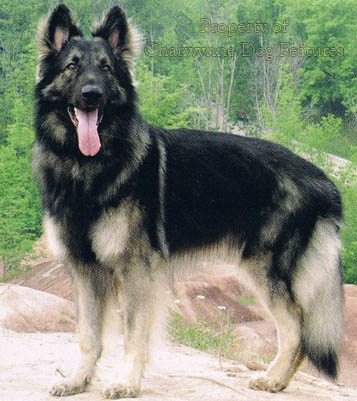
The hound expert, Newton Rycroft, made some interesting observations on heredity. He listed what he called 'genetic facts' which included: Light colours in the modern orthodox Foxhound have more quality than dark; the blue descendants of a hound called 'Carmarthen Nimrod 24' had better noses than the non-blue; the black hounds in the high quality Dumfriesshire kennel generally have more quality than the ones with more tan. He stated that a Greyhound X Bloodhound mating produced four pups, three looked like the Greyhound and had poor noses and the one that looked like a Bloodhound had an excellent nose. He observed that, although black and yellow Labradors occur in the same litter, it is the blacks which excel at field trials.
Such genetic facts are of value to breeders, but what about the inheritance of anatomical features within breeds? When the hunting fraternity wanted to lengthen the legs, shorten the ears, lessen the haw and reduce the back length of the Basset Hound of the hunting packs, they turned first to the Beagle, the closest fellow packhound breed, for an outcross. But this was not successful and so they turned to an outcross to the Harrier, which was successful and gave us the much sounder English Basset, as it is called. When an exaggeration in a breed is exaggerating itself, to threaten the well-being of the dog, where is the genetic information to correct this tendency within the breed?
In today's show rings we are beset by comparable challenges in so many breeds: upright shoulders, excessive angulation in hindquarters, lack of pelvic slope leading to restricted forward movement in the hindlimbs and gay tails, too straight a stifle and excessively heavy coats in some pastoral breeds. Does each breed with these faults, and some are engrained, possess the genetic material to remedy these faults or will judges just ignore them! Breed clubs sadly make poor breed custodians on the whole and seem happy to go on recycling the same old genes from a closed gene pool.
We live in perplexing times. A leading canine geneticist advises us that: "There is no real role for cross-breeding if you are breeding pedigree dogs..." This seems strange advice when some pedigree breeds are bred to a harmful design from their closed gene pool. Leading Russian geneticists chose to create a new breed, the Russian Black Terrier, rather than attempt to improve one existing breed, when seeking a better service dog. A breeder, himself a geneticist, has elected to cross the Boxer with a Corgi to produce a naturally docked tail in the breed of Boxer. Highly experienced breeders in Scandinavia also crossed Boxers, with Spitz breeds, to improve ear carriage and remove the need to crop ears.
Breeders of miniature Bull Terriers are being allowed by the KC to outcross to the full size Bull Terrier to widen the gene pool and improve the breed. The variety of colours in the Field Spaniel comes from a KC-approved outcross to the Springer Spaniel a few decades ago. The pedigree breeds came to us from judicious breeding between their ancestor breed-types, mainly in the 19th century. The 21st century could see a reversion to such activity. In the USA, new Toy breeds are being produced from breed-blends: the Kyi-Leo, the Mi-Ki, the 'Munchkin' and the Toy Fox Terrier. New bigger breeds are appearing: the Chinook, the Eurasier, the Shiloh and King Shepherds and the healthier longer-lived Olde Englishe Bulldogge.
These breeds, together with breeds from Britain, such as the Patterdale and Sporting Lucas Terriers, are being both recognised and their stock registered, by overseas kennel clubs. Owners here are proud of rather than self-conscious about their 'labradoodles' and 'Dalmaraners', cross-breeds often healthier and longer-lived than their contributing breeds. With show entries declining and registrations of pedigree dogs falling appreciably, is this the early signs of a sea-change in the dog-owning world? This, accompanied by a greater awareness of the discomfort experienced by exaggerated breeds, may well cause a rethink in the way breeds are perpetuated and how genetics, if not geneticists, can guide us towards healthier, longer-lived, sounder pet dogs.
But even if every registered pedigree breed is perpetuated as such, do we not still need to benefit from understandable scientific advice? Dog breeders do not wish to be patronised by arrogant experts or lectured to by highly-trained speaking clocks, only able to use their programmed knowledge to inform a remarkably patient dog-owning public. But the dog of the future is going to benefit enormously from advances in the scientific application of genetic information. Gene therapy has already been used in the USA to reverse canine inherited blindness. It has massive potential; it demands breeder-geneticist teamwork.
I now look down and tell my young Bullmastiff bitch that her ears aren't dark enough for her breed standard. She grins back at me and points out that her hearing is perfect and we both know that hearing is more important than coat colour. But whilst several books have been written on the genetics of coat colour in dog, I don't know of one devoted to the inheritance of the basic senses. Surely it is more important for a dog to be able to see, hear, scent and sense touch than to inherit the right colour. I want to understand the effect of the genotype on the phenotype, which produces what might be called the athletikotype. I don't want to drown in nucleotides; I want messenger RNA to tell me things; I want to know my exons from my introns, translation from transcription and not be made to feel hapless over haploids. But now I'll be accused, perhaps justifiably, of writing beyond my knowledge, or, as a geneticist would put it: ultracrepidarianism!